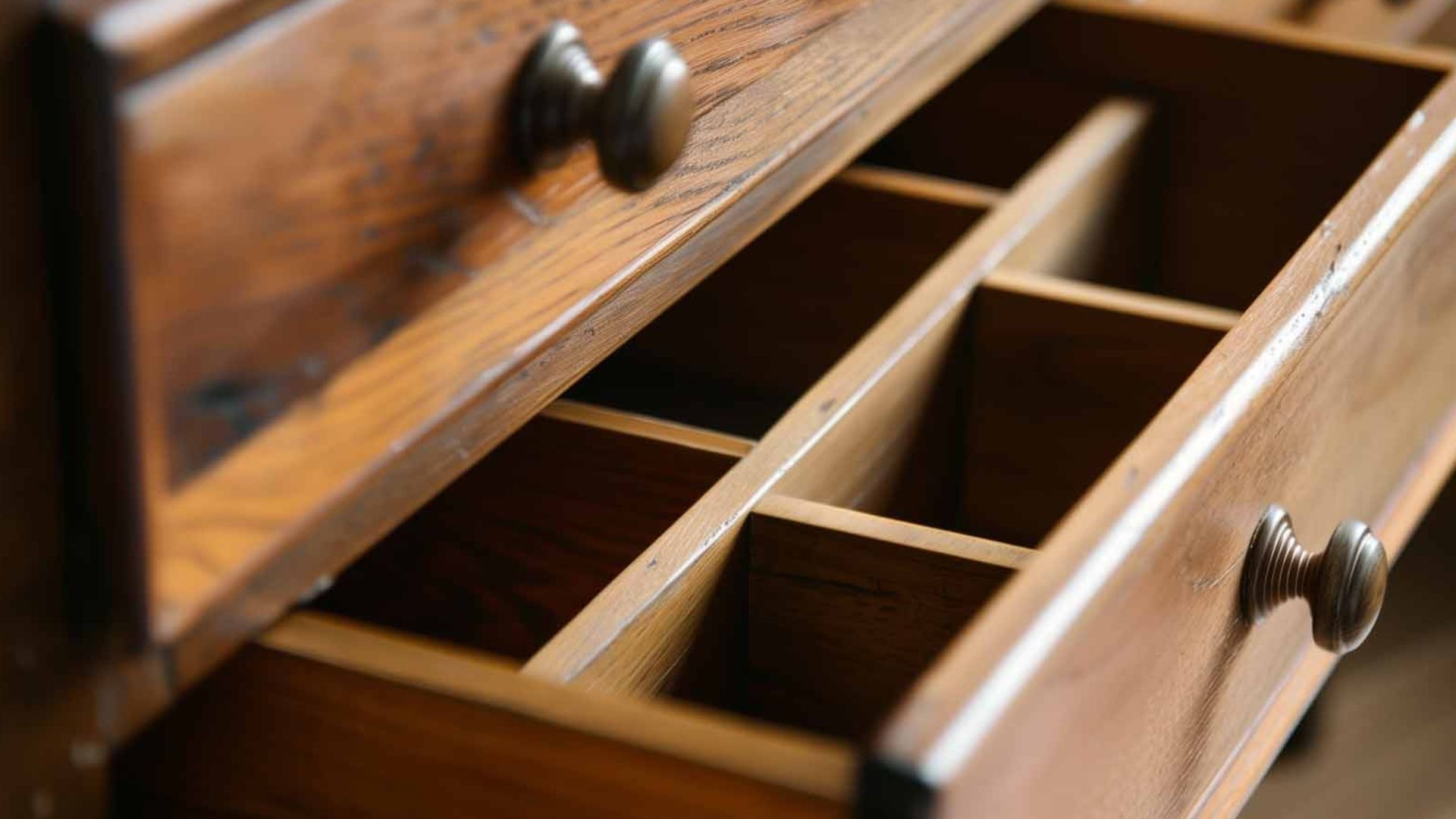Where Would Be Place to Store Hand Tools in a Workshop?
The best place to store hand tools in a workshop depends on how often you use them and your space. For daily-use tools, a pegboard near your workbench works great because you can see everything at once. For tools you don't use as much, a toolbox with drawers keeps them safe and dust-free.
Why Good Tool Storage Matters
Storing your tools the right way isn't just about keeping things neat. It helps you work faster, keeps your tools in good shape, and makes your workshop safer.
When your tools are organized, you spend less time looking for them and more time getting work done. According to the National Institute for Occupational Safety and Health, workplaces with structured storage systems see a 30% reduction in lost time due to searching for misplaced tools and equipment. Plus, tools that are stored properly last longer because they're protected from moisture, dust, and damage.
Safety First
Good storage also keeps you safe. The Bureau of Labor Statistics reports that workplace injuries from trips, slips, and falls often result from poor storage practices. When tools have their own spot, you're less likely to trip over them or get hurt by sharp edges.
The Most Popular Storage Options
Let's look at the main ways people store their hand tools. Each method has its own benefits.
Pegboards: See Everything at Once
Pegboards are wall-mounted boards with holes where you can hang hooks to hold your tools. They're super popular because you can see all your tools at once.
Good Things About Pegboards:
- You can see every tool without opening drawers
- Easy to change the layout when you get new tools
- Takes up wall space instead of floor space
- Great for tools you use every day
Not So Good Things:
- Pegboard is basically a physical version of having files scattered all over your computer's desktop
- Tools get dusty because they're out in the open
- Pegboard just eats up wall space without really storing much of a volume of tools
- Hooks can fall out when you grab tools
Toolboxes: Keep Everything Protected
Toolboxes are boxes with drawers or compartments to hold your tools. They come in all sizes, from small portable ones to big rolling cabinets.
Good Things About Toolboxes:
- Tools stay clean and protected from dust
- They keep everything safe and roll where you need them
- Good security with locks
- Drawers help organize different types of tools
Not So Good Things:
- They're bulky and sometimes a black hole for that one screwdriver
- Can't see tools without opening drawers
- Heavy drawers can be hard to open
Cabinets: The Best of Both Worlds
Cabinets are like toolboxes but mounted on the wall or built into your workshop. They have doors that close to protect your tools but give you more space than a toolbox.
Good Things About Cabinets:
- Cabinets shield tools from dust, moisture, and potential damage, extending their lifespan
- Can be locked for security
- Don't take up floor space
- Look neat and organized
Not So Good Things:
- More expensive than other options
- Need to be mounted properly to the wall
- Limited by wall space
Choosing the Right Storage for Different Tools
Not all tools need the same type of storage. Here's how to think about where to put different kinds of tools.
Tools You Use Every Day
For tools you grab all the time, like screwdrivers, hammers, and pliers, you want them easy to reach. Use foam organizers in drawers for frequently used hand tools.
A pegboard right above your workbench is perfect for these tools. You can see them all and grab what you need quickly.
Tools You Use Sometimes
For tools you use once in a while, like specialty saws or measuring tools, drawers work great. Install a pegboard for tools that are used less often but still need to be easily accessible.
Tools You Rarely Use
For tools you hardly ever touch, like seasonal equipment or specialty items, closed storage works best. Reserve a drawer for seldom-used specialty tools to avoid everyday clutter.
Smart Storage Tips for Small Workshops
If you don't have much space, you need to be smart about storage. Here are some tricks to make the most of what you have.
Use Your Walls
Pegboards offer superior flexibility in cramped workshops, fitting irregular spaces between windows, doors, and existing fixtures. You can put pegboards in odd spaces that wouldn't work for cabinets.
Think Up and Down
Don't just think about wall space at eye level. Tool racks excel at vertical organization by offering multiple tiers that stack tools efficiently from floor to ceiling.
Mobile Storage
Rolling toolboxes let you move your tools to where you're working. This is great for small shops where you need to make room for different projects.
Organizing Your Tools Like a Pro
Once you pick your storage method, you need to organize your tools smart. Here's how the pros do it.
Group Similar Tools Together
Group similar tools together (e.g., all screwdrivers in one section). This makes it easy to find what you need and put things back where they belong.
Label Everything
Labels might seem silly, but they help a lot. Labels and color-coded bins help you—and anyone else using the space—avoid confusion.
Make Custom Foam Inserts
Foam organizers are a great way to keep frequently used tools organized and prevent them from getting lost. You can cut foam to fit your drawers perfectly, with a spot for each tool.
Protecting Your Tools from Rust
One of the biggest problems with tool storage is rust. Here's how to keep your tools looking new.
Control the Humidity
Regardless of where you put your tools, you should keep the surrounding humidity below 50%. The National Fire Protection Association notes that 60% of workplace fires are linked to improper storage conditions, including high humidity environments. This is the most important thing you can do.
If you live somewhere humid, think about getting a dehumidifier for your workshop. A dehumidifier installed in a workshop is an easy and great way to keep humidity down and prevent moisture from settling into tools.
Use Moisture Absorbers
Silica gel packets help keep the air dry and protect the tools from excessive moisture. You can put these little packets in your toolbox drawers or cabinets.
Keep Tools Off the Floor
Tools that are stored directly on the floor are more prone to absorbing moisture. Always store tools on shelves or in cabinets.
Clean and Oil Your Tools
Wiping them with an oily cloth using WD-40 or a silicone spray will leave a protective film against rusting. Do this after each use, especially if you work in a humid area.
Safety Tips for Tool Storage
Storing tools safely isn't just about organization. It's about protecting yourself and others who use your workshop.
Heavy Tools Go Low
Placing heavy or bulky items on lower shelves or near the floor reduces strain on your back and minimizes the risk of accidents. The Occupational Safety and Health Administration emphasizes that proper ergonomic storage practices can significantly reduce workplace injuries from lifting and reaching.
Sharp Tools Need Special Care
Keep tools in a toolbox, tool roll, or pegboard. Proper storage reduces wear on tools and prevents accidental trips, stepped-on tools, or misplaced items that can result in accidents.
Sharp tools like chisels and utility knives should be stored in sheaths or special holders to prevent cuts.
Lock Up Dangerous Tools
Keeping sharp or hazardous tools in locked cabinets and clearly labeled bins can help prevent injuries.
Creating Different Storage Zones
Smart workshop owners create different zones for different types of work. This keeps tools organized and makes work flow better.
The Daily Use Zone
This is the area right around your main workbench. Keep your most-used tools here on a pegboard or in a small toolbox. Tools like hammers, screwdrivers, pliers, and tape measures belong here.
The Project Zone
Set up a mobile cart or rolling toolbox that you can move to different parts of your workshop. Load it with the tools you need for your current project.
The Storage Zone
This is where you keep tools you don't use often, spare parts, and supplies. Cabinets or large toolboxes work well here.
Making Storage Work for Your Budget
You don't need to spend a fortune on fancy storage systems. Here are some ways to get organized without breaking the bank.
Start Simple
A basic pegboard and some hooks can organize a lot of tools for very little money. Wall Control pegboard set is perfect for the customer on a budget.
Use What You Have
Old coffee cans, mason jars, and food containers make great storage for screws, nails, and small parts. I also use kitchen drawer organizers in my tool box, i have gained a lot more space that way.
Build Your Own
If you're handy, you can build your own tool storage. Simple wooden shelves, pegboard frames, and drawer organizers are all easy weekend projects.
Common Storage Mistakes to Avoid
Learn from other people's mistakes. Here are the biggest storage problems people run into.
Buying Too Much Too Fast
Don't rush out and buy a huge storage system right away. Start small and add to it as your tool collection grows.
Not Thinking About Your Workflow
Think about how you actually work. If you're always walking across the shop to get tools, your storage isn't set up right.
Forgetting About Maintenance
Storage systems need care too. Clean out drawers, oil hinges, and replace worn-out parts to keep everything working smoothly.
Special Storage for Special Tools
Some tools need special storage considerations. Here's how to handle the tricky ones.
Long Tools
Tools like levels, long rulers, and some saws need special storage. Pegboard is quite practical for hanging the longer tools like hand saws, four foot level, drywall square, framing square, etc.
Small Parts and Hardware
Use clear plastic containers with dividers for easy visibility. Label containers clearly to avoid confusion.
Precision Tools
Expensive precision tools like calipers and micrometers need extra protection. Keep them in their original cases or padded drawers.
When to Upgrade Your Storage
Your storage needs will change as your tool collection grows. Here's when it might be time to upgrade.
You're Running Out of Space
If you're cramming tools into every available spot, it's time to get more storage or reorganize what you have.
You Can't Find Things
If you spend more time looking for tools than using them, your storage system isn't working.
Your Tools Are Getting Damaged
If tools are getting dinged up, rusted, or broken because of poor storage, it's time for a change.
The Future of Tool Storage
Tool storage keeps getting better. Here are some trends to watch for.
Smart Storage
Some new toolboxes have built-in lights, USB charging ports, and even Bluetooth tracking to help you find lost tools. Research from MIT's Computer Science and Artificial Intelligence Laboratory shows that smart storage systems can improve workshop efficiency by up to 40% through better tool tracking and organization.
Modular Systems
Systems that can grow and change with your needs are becoming more popular. You can start small and add pieces as needed.
Better Materials
New plastics and metals are making storage systems lighter, stronger, and more resistant to rust and damage.
Final Thoughts
The best place to store your hand tools depends on your space, your tools, and how you work. For most people, a mix of different storage types works best. Keep your daily tools on a pegboard where you can see them, store your occasional tools in drawers, and protect your rarely-used tools in closed cabinets.
Remember, the perfect storage system is one that you'll actually use. Keep it simple, keep it organized, and keep your tools dry and protected. Whether you're just starting out with a basic pegboard or you're ready to invest in a professional storage system, the key is finding what works for your workshop and your way of working.
Ready to get your workshop organized? Start with one storage solution and build from there. Your tools will last longer, your work will go faster, and you'll enjoy spending time in your workshop more. For more tips on organizing your space and keeping your belongings safe during transitions, check out our guides on storage solutions and packing services.



